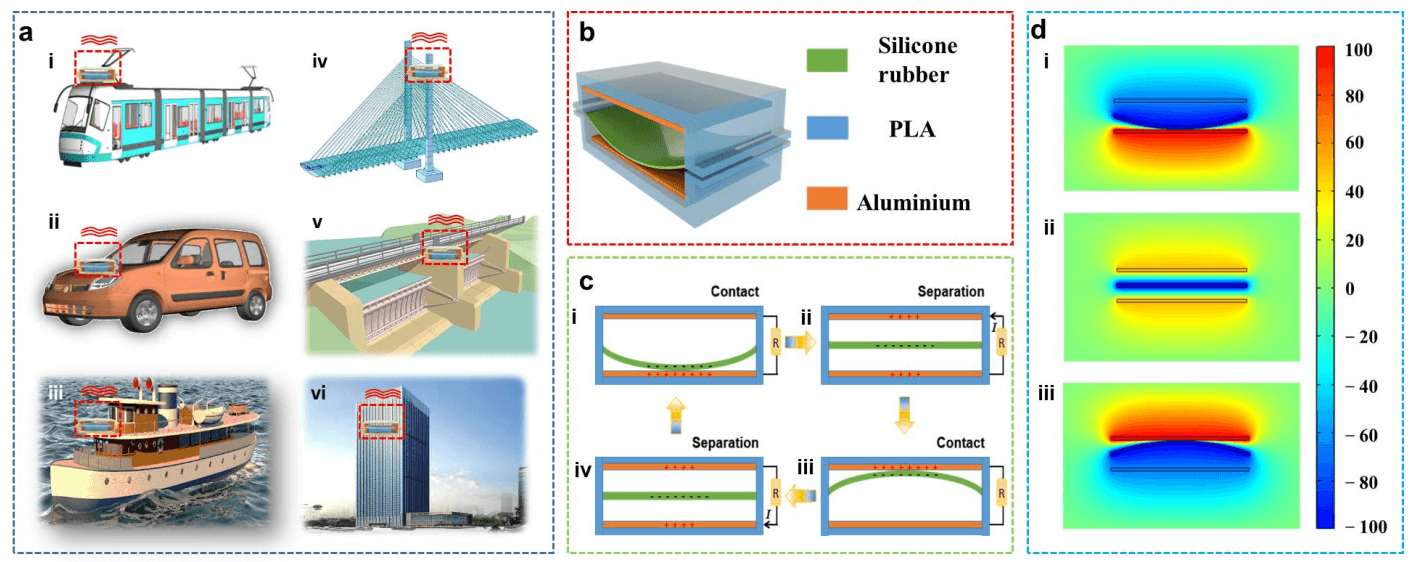Abstract
Vibration is a common phenomenon in various fields which can not only indicate the working condition of the installation, but also serve as an energy source if it is efficiently harvested. In this work, a robust silicone rubber strip-based triboelectric nanogenerator (SRS-TENG) for vibration energy harvesting and multi-functional self-powered sensing is proposed and systematically investigated. The SRS-TENG consists of a silicone rubber strip and two aluminum electrode layers supported by polylactic acid (PLA), and acts as a sustainable power source and vibration frequency, amplitude and acceleration sensor as well. The soft contact between the aluminum electrode and silicone rubber strip makes it robust and stable even after 14 days. It can be applied in ranges of vibration frequencies from 5 to 90 Hz, and amplitudes from 0.5 to 9 mm, which shows it has advantages in broadband vibration. Additionally, it can achieve lower startup limits due to its soft structure and being able to work in multi-mode. The output power density of the SRS-TENG can reach 94.95 W/m3, matching a resistance of 250 MΩ, and it can light up more than 100 LEDs and power a commercial temperature sensor after charging capacitors. In addition, the vibration amplitude can be successfully detected and displayed on a human–machine interface. Moreover, the frequency beyond a specific limit can be distinguished by the SRS-TENG as well. Therefore, the SRS-TENG can be utilized as an in situ power source for distributed sensor nodes and a multifunctional self-powered vibration sensor in many scenarios.

